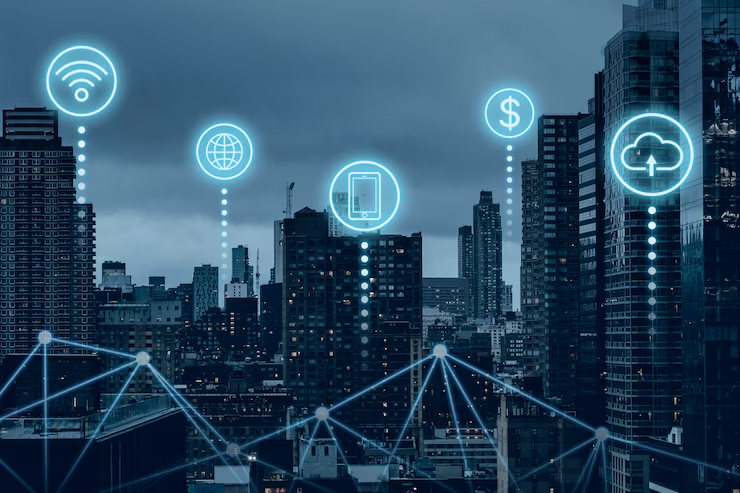As we move deeper into the digital age, our connection to the internet has never been more crucial. Yet traditional networks often struggle to keep up with our growing demands for speed and reliability. Enter IP2 Networks—a groundbreaking approach that promises to reshape how we connect online. Imagine a world where your devices communicate seamlessly, without the limitations of outdated infrastructure. This innovative technology is not just about better connections; it’s about revolutionizing the entire landscape of internet connectivity. Let’s dive into what makes IP2 Networks a game-changer and explore its vast potential.
What are IP2 Networks?
IP2 Networks represent a new paradigm in internet connectivity, designed to enhance communication between devices. Unlike traditional networks that rely on fixed infrastructures, IP2 Networks leverage advanced protocols for dynamic routing and data delivery.
At their core, these networks utilize intelligent algorithms to optimize traffic flow. This means information can be transmitted more efficiently across various paths, adapting in real-time based on network conditions.
One of the key features is decentralization. IP2 Networks reduce reliance on central servers and instead distribute data across multiple nodes. This not only improves speed but also enhances resilience against outages or attacks.
Moreover, they support a vast range of applications—from smart homes to industrial automation—making them versatile solutions for modern connectivity challenges. With IP2 Networks, the future becomes increasingly interconnected and responsive to users’ needs.
How do IP2 Networks differ from traditional networks?
IP2 Networks represent a significant shift from traditional networking models. Unlike conventional networks that rely on fixed infrastructure, IP2 Networks utilize a more decentralized approach. This allows for greater flexibility and adaptability in connectivity.
Traditional networks often depend on centralized servers and rigid protocols. IP2 Networks leverage advanced algorithms to route data dynamically. This results in improved efficiency and reduced latency.
Another difference lies in scalability. With traditional systems, expanding capacity can be cumbersome and costly. In contrast, Networks can easily scale up or down based on demand without compromising performance.
Security is another area of distinction. Traditional networks may face vulnerabilities due to their reliance on central points of failure. Conversely, the distributed nature of Networks enhances resilience against attacks, making them inherently more secure.
These differences highlight how IP2 Networks are redefining the landscape of internet connectivity through innovation and enhanced capabilities.
The Benefits of IP2 Networks
IP2 Networks offer several advantages that can revolutionize how we connect to the internet. One of the primary benefits is enhanced security. With decentralized architecture, these networks reduce vulnerabilities often present in traditional systems.
Another significant advantage is increased bandwidth efficiency. Networks allow for better resource allocation and management, leading to faster speeds and a more reliable connection.
They also promote accessibility. Users in remote areas can benefit from improved connectivity options, bridging the digital divide that has existed for years.
Cost-effectiveness stands out as well. Organizations can save on infrastructure expenses by utilizing existing connections and minimizing reliance on costly hardware.
IP2 foster innovation through their flexible framework, enabling developers to create new applications tailored for specific user needs without being constrained by traditional network limitations.
Applications of IP2 Networks in Different Industries
IP2 Networks are swiftly transforming various industries by enhancing connectivity and data exchange. In healthcare, they streamline patient data management, allowing for real-time updates and improved telemedicine services. This leads to better patient outcomes.
In the manufacturing sector, Networks facilitate smarter supply chains. They enable seamless communication between machines and systems, driving automation and efficiency on the production floor.
The entertainment industry also benefits from this technology. With high-speed connections, streaming services can deliver content in superior quality without interruptions.
Smart cities utilize Networks to improve urban infrastructure. From traffic management to public safety systems, these networks create a more interconnected environment that enhances daily life for residents.
Retail is evolving as well; businesses leverage IP2 Networks for personalized customer experiences through advanced analytics and targeted marketing strategies. Each of these applications showcases the versatility of IP2 across diverse sectors.
Challenges and Concerns Surrounding IP2 Networks
As with any emerging technology, Networks face several challenges. One significant concern is security. With more interconnected devices, the risk of cyberattacks increases. Ensuring robust encryption and protection against breaches becomes paramount.
Another issue involves scalability. While IP2 promise flexibility, growing numbers of users can strain infrastructure. It’s crucial to develop systems that can expand seamlessly without sacrificing performance.
Interoperability also poses a challenge. Different devices and platforms may not easily communicate with one another within an IP2 framework, leading to fragmentation in connectivity solutions.
Regulatory hurdles cannot be overlooked. Governments are still catching up with technological advancements; navigating compliance can become complex for businesses looking to adopt these networks effectively.
These concerns need addressing as we move toward broader adoption of this innovative approach to internet connectivity.
The Future of Internet Connectivity with IP2 Networks
The landscape of internet connectivity is evolving rapidly, and IP2 Networks are at the forefront of this transformation. These networks promise to revolutionize how we connect by enhancing speed and accessibility.
As technology advances, Networks will likely enable seamless integration across devices. Imagine homes where smart appliances communicate effortlessly, optimizing energy use while ensuring security.
Moreover, businesses can harness these networks for real-time data exchange. This shift could drive innovation in sectors like healthcare and finance, improving service delivery significantly.
With an emphasis on decentralized structures, IP2 also have the potential to bolster privacy. By reducing reliance on central servers, users gain more control over their data.
In urban areas with high-density populations, IP2 can alleviate congestion issues prevalent in traditional systems. Enhanced bandwidth will pave the way for richer online experiences without lag or interruption.
Conclusion: Embracing the Potential of IP2 Networks
The rise of IP2 networks marks a significant shift in how we connect to the internet. These networks promise greater efficiency, security, and reliability compared to traditional systems. As industries recognize their potential, applications are emerging across various sectors—from healthcare to finance.
With benefits like reduced latency and enhanced data integrity, networks can meet the demands of an increasingly digital world. However, challenges remain that need addressing before widespread adoption can occur. Concerns over privacy and infrastructure readiness must be closely examined.
As technology evolves, so will our methods of connectivity. Embracing the innovations brought forth by IP2 could redefine how we interact with information daily. The future holds exciting possibilities for those ready to adapt and innovate within this new framework.

